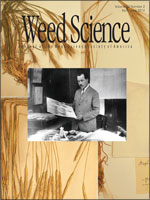Littleseed canarygrass is a troublesome grass weed in wheat fields in Iran. Predicting weed emergence dynamics can help farmers more effectively control weeds. In this work, four nonlinear regression models (beta, three-piece segmented, two-piece segmented, and modified Malo's exponential sine) were compared to describe the cardinal temperatures for the germination of littleseed canarygrass. Two replicated experiments were performed with the same temperatures. An iterative optimization method was used to calibrate the models and different statistical indices (mean absolute error [MAE], coefficient of determination [R2], intercept and slope of the regression equation of predicted vs. observed hours to germination) were applied to compare their performance. The three-piece segmented model was the best model to predict the germination rate (R2 = 0.99, MAE = 0.20 d, and coefficient of variation 1.01 to 4.06%). Based on the model outputs, the base, the lower optimum, the upper optimum, and the maximum temperatures for the germination of littleseed canarygrass were estimated to be 4.69, 22.60, 29.62, and 38.13 C, respectively. The thermal time required to reach 10, 50, and 90% germination was 31.98, 39.26 and 45.55 degree-days, respectively. The cardinal temperatures depended on the model used for their estimation. Overall, the three-piece segmented model was better suited than the other models to estimate the cardinal temperatures for the germination of littleseed canarygrass.
Nomenclature: Littleseed canarygrass, Phalaris minor Retz.





